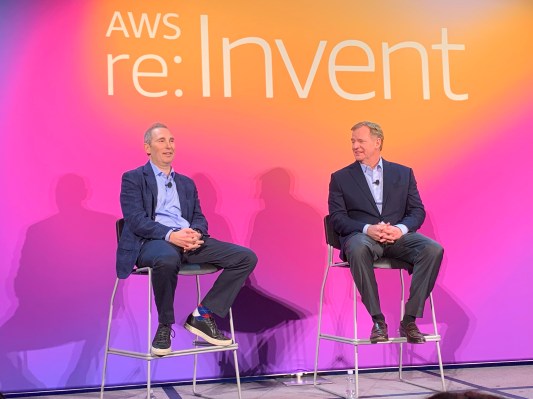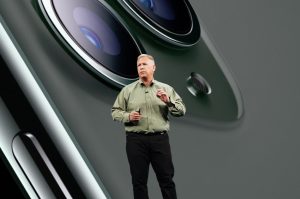
Today at AWS re:Invent in Las Vegas, NFL commissioner Roger Goodell joined AWS CEO Andy Jassy onstage to announce a new partnership to use machine learning to help reduce head injuries in professional football.
“We’re excited to announce a new strategic partnership together, which is going to combine cloud computing, machine learning and data science to work on transforming player health and safety,” Jassy said today.
NFL football is a fast and violent sport involving large men. Injuries are a part of the game, but the NFL is hoping to reduce head injuries in particular, a huge problem for the sport. A 2017 study found that 110 out of 111 deceased NFL players had chronic traumatic encephalopathy (CTE).
The NFL has a head start in machine learning due to the sheer amount of data it collects on its players. The sport also has decades of video. That means they should be able to create meaningful simulations that can help improve helmet design and also lead to rule changes that could reduce the concussion risk that is endemic in the sport.
Goodell recognizes that the sport has all this data, but lacks the expertise to put it to work. That’s where the partnership comes in. “I think what’s most exciting to me is that there are very few relationships that we get involved with where the partner and the NFL can change the game,” he said.
Jeff Miller, executive VP for Health and safety innovation for the NFL, says this partnership is part of a broader initiative the NFL has taken over the last few years to find ways to reduce head injuries in the game. “About three and a half years ago the NFL started a project called ‘The Engineering Roadmap’, which was a multibillion-dollar effort supported by our owners to better understand the impact of concussions on the field, then design ways to mitigate those injuries and move the helmet industry forward,” Miller said today.
Jeff Crandall, chairman of the NFL engineering committee, says this involves three main pieces. The first is understanding what happens on the field, particularly who is getting injured and why. Secondly, it involves taking that data and sharing it with the helmet industry to help them build better helmets. The final piece is incentivizing the helmet industry to build better helmets, and to that end the league established the $3 million helmet challenge.
The way AWS helps is of course putting all this data to work with its machine learning toolset. AWS’s VP of artificial intelligence, Matt Wood, says that having all this data is a huge advantage and allows them to put it to work in a data lake, and then use the AWS SageMaker toolset to help make sense of it and produce safer outcomes.
The hope is to help understand, not only how head injuries occur, and to prevent them to the extent possible in a violent sport, but also design better equipment and rule changes to reduce the number of injuries overall. Putting data to work and combining it with machine learning tools could help.




